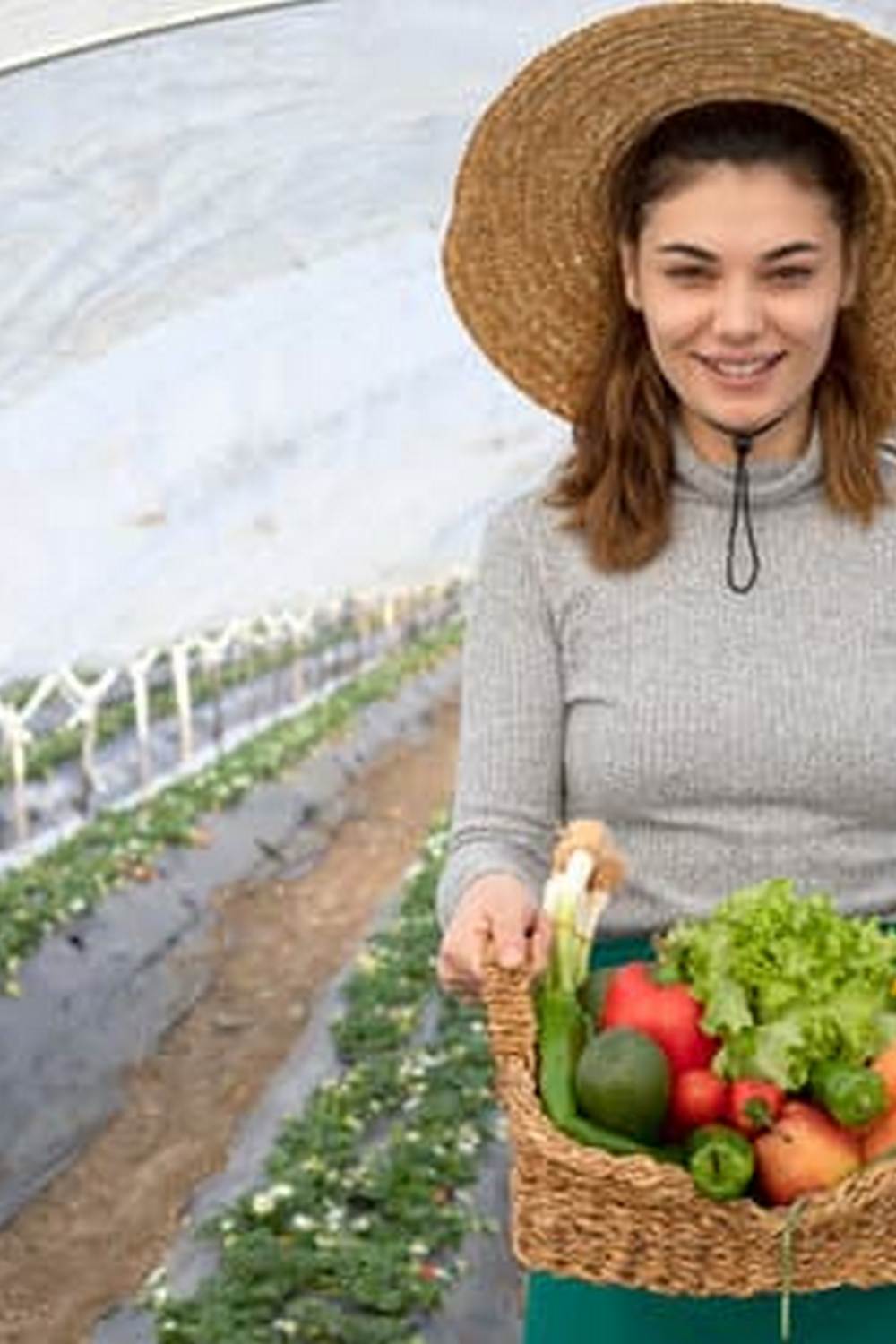Are you looking to take your gardening skills to the next level? Gardening vegetables vines can be a rewarding and fruitful experience for any green-thumb enthusiast. In this article, we will explore the world of growing vegetables on vines, from the benefits of this method to choosing the right vines for your garden, as well as tips for planting and caring for vegetable vines.
One of the main advantages of gardening vegetables on vines is maximizing space. With proper trellising, you can grow an abundance of produce even in limited garden space. Additionally, growing vegetables on vines can result in healthier plants and higher yields, making it a popular choice among experienced gardeners.
When it comes to choosing the right vines for your vegetable garden, there are several factors to consider such as climate, available space, and personal preference. From classic choices like tomatoes and cucumbers to exotic options like bitter gourd and snake gourd, there are countless possibilities when it comes to vegetable vines. In the following sections, we will provide valuable tips on how to select the best vines for your specific gardening needs.
Benefits of Growing Vegetables on Vines
Growing vegetables on vines can be a rewarding and beneficial way to cultivate a bountiful garden. There are numerous advantages to choosing vines as the method for growing your veggies, including maximizing space, increasing yields, and reducing the risk of certain pests and diseases.
Maximizing Space
One of the key benefits of growing vegetables on vines is the ability to maximize limited garden space. By training plants to grow vertically on trellises or support structures, you can make efficient use of small areas. This is particularly advantageous for urban or small-scale gardeners who may have limited space available for traditional gardening methods.
Increased Yields
Another advantage of growing vegetables on vines is the potential for increased yields. When plants are trained to grow upwards, they are able to receive more sunlight and air circulation, which can lead to healthier plants and larger harvests. Additionally, growing vertically allows for better utilization of nutrients and water in the soil, further contributing to higher yields.
Reduced Risk of Pests and Diseases
Vegetable vines also offer the benefit of reducing the risk of certain pests and diseases that commonly affect ground-grown crops. By keeping plants off the ground, you can minimize contact with soil-borne pathogens and make it more difficult for pests to access your precious produce. This can result in healthier plants and a decreased need for chemical interventions. Overall, choosing to grow vegetables on vines can lead to a more productive and sustainable gardening experience.
Choosing the Right Vines for Your Vegetable Garden
When it comes to gardening vegetables on vines, choosing the right vines for your vegetable garden is crucial for a successful harvest. Different types of vegetables require different types of support and space, so it’s important to select the right vines based on the layout and design of your garden.
One of the most popular choices for vegetable vines is the classic tomato plant. Tomatoes are versatile and can grow in various climates, making them a great option for many gardeners. Another popular vine vegetable is cucumbers, which are perfect for trellises or vertical gardening due to their climbing nature.
Other great choices for vegetable vines include peas, beans, and squash. These vegetables can all thrive when grown on trellises or other supports, which not only saves space but also makes harvesting much easier. When choosing the right vines for your vegetable garden, consider the available space, climate, and the specific needs of each type of vegetable.
It’s important to note that some vegetables, such as pumpkins and melons, may not be suitable for vertical gardening due to their heavy fruits. These types of vegetables often require more ground space to spread out as they grow. Therefore, it’s essential to plan your garden layout carefully and choose the right vines accordingly.
| Vine Vegetable | Best Support Type |
|---|---|
| Tomatoes | Trellis or Cage |
| Cucumbers | Vertical Trellis |
| Peas/Beans/Squash | Trellis or Fence |
Tips for Planting and Caring for Vegetable Vines
When it comes to gardening vegetables, vines can be a great addition to your garden. Not only do they add visual interest and vertical appeal, but they also provide an efficient use of space and can even help shade and cool the ground beneath them. Planting and caring for vegetable vines requires some special attention, but with the right tips, you can have a successful and thriving vine garden.
Choosing the Right Location and Soil
Before planting vegetable vines, it’s important to choose the right location for them in your garden. Most vegetable vines thrive in well-drained soil with plenty of organic matter. They also need full sun for optimal growth. Ensure that the area where you plant your vines has good air circulation as this can help prevent diseases from taking hold.
Planting and Watering
When planting vegetable vines, be sure to provide adequate space between plants to allow for proper airflow. This will help reduce the risk of pests and diseases. Watering is crucial for vine plants, especially during dry spells. Be sure to water at the base of the plants to keep foliage dry and prevent issues like powdery mildew.
Training and Pruning
As your vegetable vines grow, it’s important to train them onto trellises or other support structures. This will help keep the fruit off the ground, reducing the risk of rot or disease. Additionally, regular pruning can help control excessive growth and encourage better fruit production. By removing unnecessary foliage or side shoots, you can direct energy into fruit development.
By following these tips for planting and caring for vegetable vines, you can enjoy a bountiful harvest of fresh produce from your garden. With proper care and attention, your vine vegetables will flourish and provide you with delicious fruits throughout the growing season.
Common Pests and Diseases to Look Out for in Vegetable Vines
When caring for vegetable vines, it’s essential to be aware of common pests and diseases that can affect your garden. By being proactive and learning how to identify these issues, you can take the necessary steps to prevent and treat them before they cause irreversible damage to your plants. Here are some of the most common pests and diseases to look out for when gardening vegetables vines:
- Aphids: These small insects can quickly multiply and suck the sap from your vegetable vines, causing wilting and stunted growth. Keep an eye out for clusters of aphids on the underside of leaves and use insecticidal soap or neem oil to control infestations.
- Powdery Mildew: This fungal disease thrives in warm, humid conditions and appears as a powdery white substance on the leaves of vegetable vines. To prevent powdery mildew, ensure good air circulation around your plants and consider using fungicides labeled for this disease.
- Tomato Hornworms: These large green caterpillars feed on the leaves and fruits of tomato vines, causing significant damage if left unchecked. Handpick hornworms from your plants or introduce natural predators like parasitic wasps to control their population.
By staying vigilant and implementing proper gardening practices, you can protect your vegetable vines from these common pests and diseases. Additionally, practicing crop rotation, maintaining good soil health, and providing optimal growing conditions can also help reduce the risk of infestations and infections in your garden. It’s important to regularly inspect your plants for any signs of trouble so that you can address issues early on and maximize the productivity of your vegetable vine garden.
Remember that prevention is key when it comes to managing pests and diseases in your vegetable vines, so consider incorporating integrated pest management techniques into your gardening routine. With a little knowledge and effort, you can successfully keep your vegetable vines healthy and thriving throughout the growing season.
Harvesting and Utilizing the Fruits of Your Vegetable Vines
Once your vegetable vines have reached full maturity, it’s time to reap the rewards of all your hard work. From delicious fruits like tomatoes and cucumbers to nutritious options such as peas and beans, there are numerous ways to utilize the harvest from your vegetable vines.
To ensure a bountiful harvest, it’s important to pick your fruits at the right time. For example, tomatoes should be harvested when they are fully colored and slightly soft to the touch, while cucumbers should be picked when they are firm and vibrant in color. As for peas and beans, it’s best to harvest them when the pods are fully developed but still tender.
Here are some creative ways to utilize the fruits of your vegetable vines:
- Add fresh tomatoes and cucumbers to salads for a refreshing crunch
- Use ripe tomatoes to make a flavorful pasta sauce or salsa
- Incorporate freshly-picked peas and beans into stir-fries or soups
By incorporating these delicious fruits into your meals, you’ll not only enjoy the satisfaction of growing your own food but also savor the flavors of freshly-picked produce. Plus, by utilizing your harvest in various dishes, you can truly appreciate the full potential of your vegetable vines.
Creative Trellis and Support Ideas for Vegetable Vines
When it comes to growing vegetables on vines, providing proper support is crucial to ensure a successful harvest. There are several creative trellis and support ideas that can help your vegetable vines thrive and produce an abundant crop. One popular method is using a traditional wooden or metal trellis, which provides a sturdy structure for the vines to climb. This not only saves space in your garden but also allows for better air circulation and sunlight exposure, promoting healthy growth.
Another creative idea is utilizing old ladders or other repurposed materials as a makeshift trellis for your vegetable vines. This not only adds a unique and whimsical touch to your garden but also offers an eco-friendly solution by upcycling items that would otherwise go to waste. Additionally, using chicken wire or mesh attached to poles or stakes can provide excellent support for climbing vegetables such as tomatoes, cucumbers, and peas.
For those looking for a more aesthetic appeal, incorporating arched or overhead trellises can add visual interest to your vegetable garden while also creating a protective canopy for the plants. This type of support not only adds charm to your garden but also allows for easier maintenance by providing better access to the plants for pruning, watering, and harvesting.
| Trellis/Support Idea | Benefits |
|---|---|
| Traditional wooden or metal trellis | Provides sturdy structure, saves space, promotes air circulation |
| Repurposed materials (e.g. old ladders) | Eco-friendly solution, adds unique touch to the garden |
| Chicken wire/mesh on poles/stakes | Excellent support for climbing vegetables like tomatoes and cucumbers |
| Arched/overhead trellises | Adds visual interest, creates protective canopy for plants |
Success Stories and Tips From Experienced Vegetable Vine Gardeners
In conclusion, gardening vegetables on vines can be a rewarding and fruitful experience for any gardener. The benefits of growing vegetables on vines are numerous, from maximizing space to increasing crop yield. By choosing the right vines for your vegetable garden and following tips for planting and caring for them, you can ensure a successful harvest.
It’s important to be aware of common pests and diseases that can affect vegetable vines, but with proper care and attention, these issues can be minimized. Harvesting the fruits of your labor and utilizing them in delicious recipes is one of the most satisfying aspects of growing vegetables on vines. Additionally, getting creative with trellis and support ideas can further enhance the success of your vegetable vine garden.
For those seeking inspiration and advice, experienced vegetable vine gardeners have shared their success stories and tips. Learning from their experiences can help beginners avoid common pitfalls and achieve greater success in their own gardening endeavors.
Overall, gardening vegetables on vines is a fulfilling and enjoyable way to cultivate a bountiful harvest while making the most of limited space. Whether you’re a seasoned gardener or just starting out, exploring the world of vegetable vines offers endless possibilities for growth and enjoyment.
Frequently Asked Questions
What Vegetables Can Grow on a Vine?
Vegetables that can grow on a vine include tomatoes, cucumbers, squash, pumpkins, and melons. These plants use their long, trailing vines to support and grow their fruits off the ground.
What Vegetables Are Best for Climbing?
Some of the best vegetables for climbing are pole beans, peas, and certain varieties of tomatoes. These plants thrive when given a vertical support structure to climb, which can also help save space in the garden.
What Garden Vegetables Need to Climb?
Garden vegetables that need to climb typically include those with vining or trailing growth habits such as cucumbers, peas, pole beans, and certain types of squash. Providing these plants with a trellis or other support system can help promote healthy growth and maximize garden space.

If you’re looking to get into vegetable gardening, or are just looking for some tips on how to make your current garden better, then you’ve come to the right place! My name is Ethel and I have been gardening for years. In this blog, I’m going to share with you some of my best tips on how to create a successful vegetable garden.





